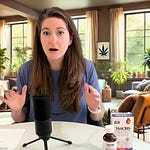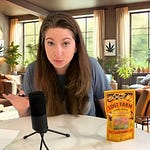What Happened to Good Weed?
Legal cannabis was supposed to be a good thing.
More access. More consistency. More choices.
But here we are—dry buds, dull effects, and disappointing experiences at the dispensary.
If you’ve walked out with a pricey eighth that barely delivered relief (or felt like you were smoking paper), you’re not imagining it. You’re not alone. And it’s not your tolerance.
It’s the weed.
And there are seven reasons why.
7 Reasons Legal Weed Feels Weaker—And What You Can Do About It
1. Autoflower Seeds = Fast, Weak Flower
Big producers are leaning into autoflower and genetically altered seeds. Why? Faster grow cycles, faster profits.
But here’s the tradeoff:
Smaller, less potent plants
Reduced terpenes and cannabinoids
Shallow growth that never fully matures
We’ve grown autoflowers ourselves. They’re easy—but rarely exceptional. And when scaled up, the quality tanks.
2. Indoor Grows Without Sunlight
Most commercial cannabis is grown indoors, away from natural light and airflow. Without sun or open-air circulation, the plants don’t develop properly—and pests like gnats, mold, and mites thrive.
Sun-grown cannabis? It still exists, but it’s harder to find.
3. Synthetic Nutrients = Harsh Smoke
Mass-market grows often rely on synthetic fertilizers to bulk up plants. The problem? If those chemicals aren’t properly flushed before harvest, you’re inhaling them.
That means:
Harsher smoke
Fewer medicinal benefits
More throat irritation and coughing
4. Pesticides and Plant Growth Regulators (PGRs)
To make cannabis look shelf-perfect—dense, frosty, symmetrical—many cultivators use pesticides and PGRs.
But looks aren’t everything. These additives don’t improve the experience. They just make weed “Instagrammable.”Meanwhile, the plant’s integrity and effects suffer.
5. Machine Trimming Destroys Potency
Hand-trimmed flower used to be the gold standard. Now? It’s mostly done by machines.
And those machines? They shake off the trichomes—the fragile crystals where the magic lives (cannabinoids, terpenes, and flavor). You end up with a bland, less effective product.
6. Irradiation: Yes, That Means Radiation
Here’s something few people know: many dispensaries irradiate their weed—exposing it to radiation to kill mold and bacteria so it can pass testing.
It doesn’t remove mold. It just deactivates it.
So you’re inhaling dead contaminants—and you’ll never see it on the label.
7. Poor Curing & Months-Old Buds
Good cannabis is cured slowly—over 2 to 4 months—to enhance aroma, flavor, and effect.
But most commercial grows skip that step. They chop, quick-dry, test, and ship. By the time it hits shelves, it’s already 5–6 months old and dried out beyond saving.
So What Can You Do?
We’re not powerless.
Here are two options for better cannabis:
Grow Your Own: Look for heirloom or landrace seeds.
Find a Local Grower You Trust: Ask around. Word of mouth matters.
Many in our community have stopped buying from large dispensaries altogether—too much tax, too little quality.
Let’s Build a Better Cannabis Guide—Together
Know a brand that’s still doing it right? Leave a comment or reply with:
The brand name
What state you’re in
The strain you recommend
We’ll compile the list and share it with the entire Senior Savvy community. Because transparency and shared wisdom matter.
Final Thought
Legalization brought access—but it also brought shortcuts.
The medicinal cannabis many of us relied on a decade ago? It’s not what’s being sold in stores today.
And unless we start demanding better—or growing it ourselves—we’ll keep getting synthetic-fed, irradiated, overprocessed weed that just doesn’t work.
It’s time to bring back real weed. And yes—we absolutely can.
💬 Share this with someone who’s been disappointed by dispensary weed lately. Let’s start the conversation.
📝 Want more tips like this? Subscribe for daily cannabis wellness insights straight to your inbox.
Disclaimer: The information provided on this blog is for educational purposes only and is not a substitute for professional medical advice. Always consult your healthcare provider before starting or changing any treatments, including cannabis use.












Share this post